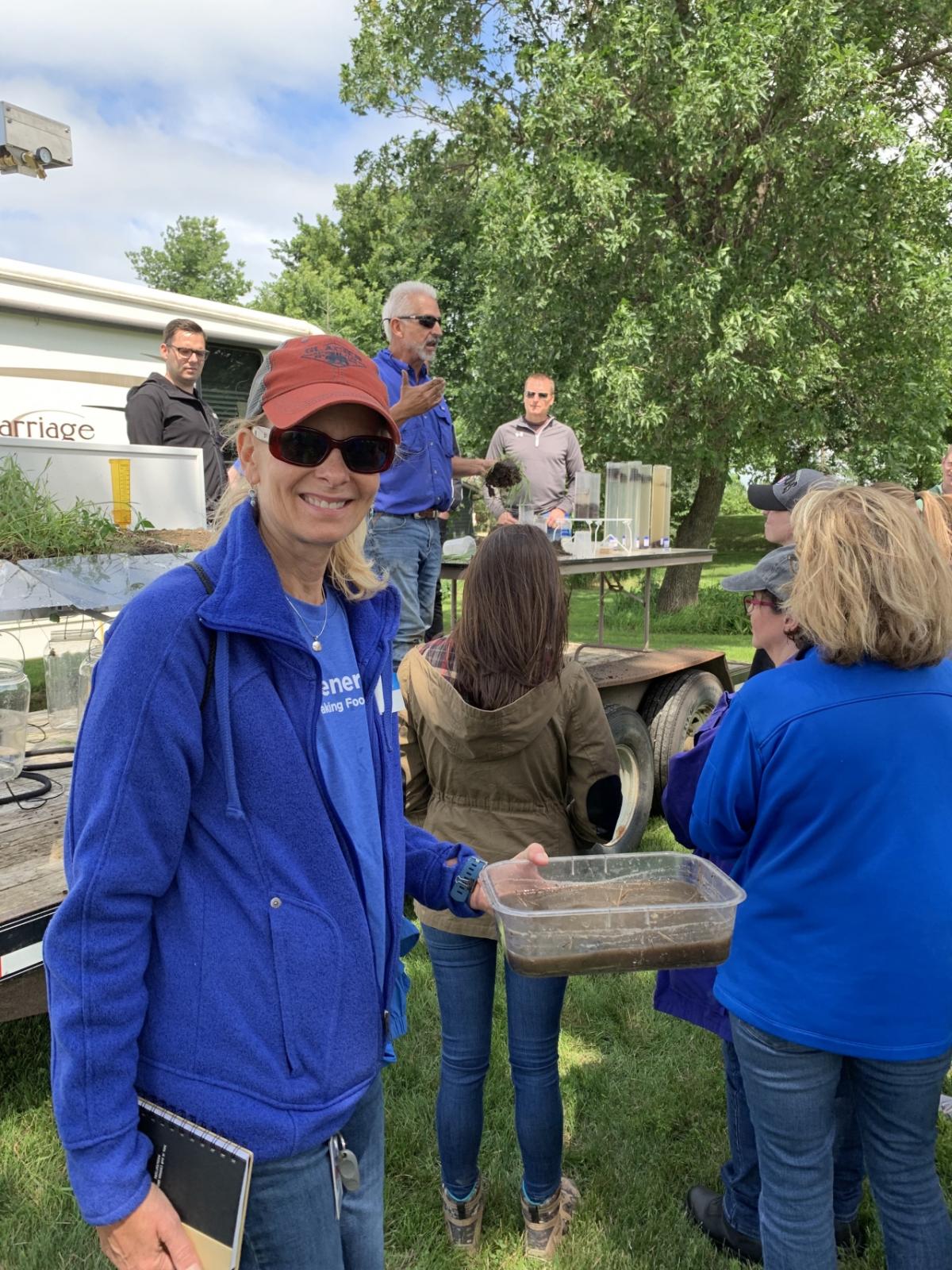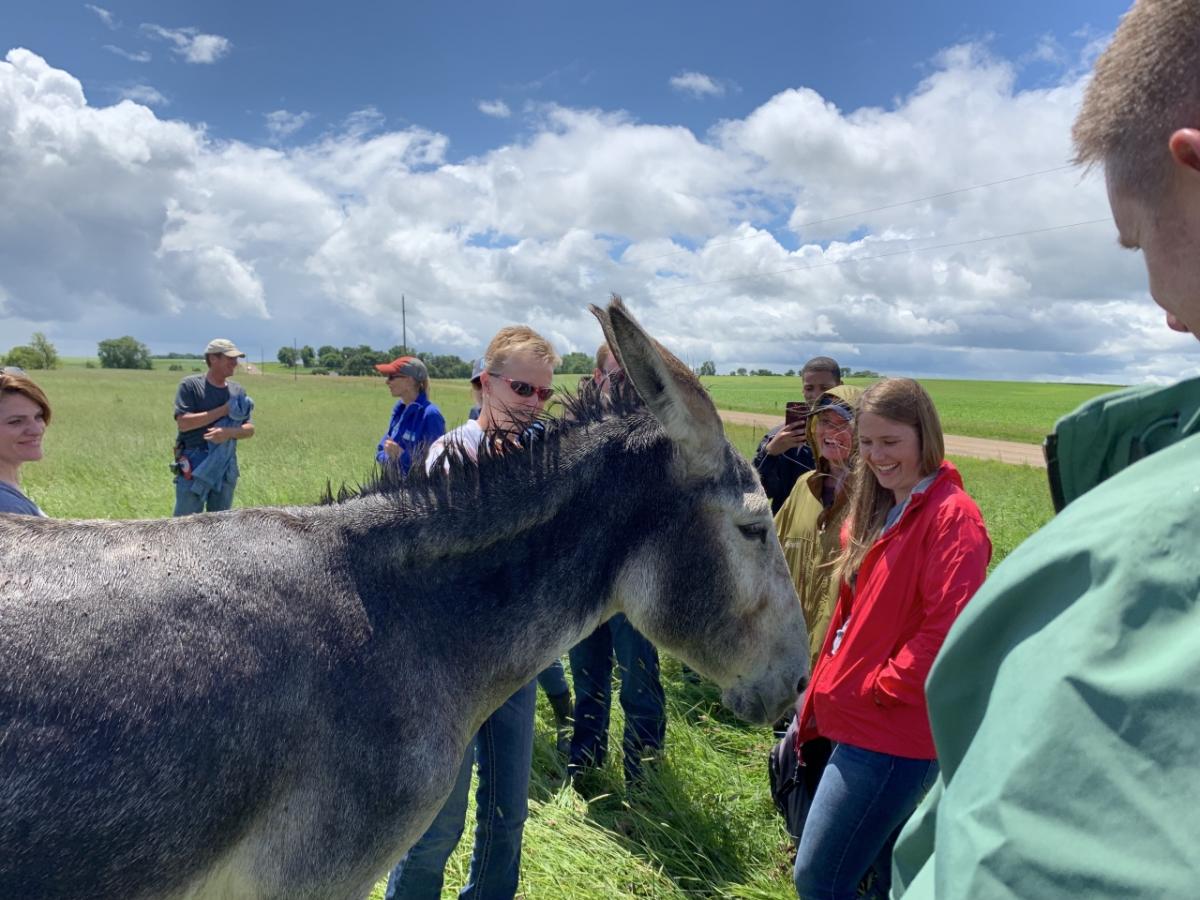From Office to Field: A Trip to Stoney Creek Farm
By Hanna Johnson
Some General Mills employees recently got an up-close look at what it means to practice regenerative agriculture, and it didn’t happen from their desks.
Nearly 50 employees from our Foundation, Sustainability, Sourcing, Snack and Cereal teams traveled to Stoney Creek Farm in Redwood Falls, Minnesota. There, they met the Breitkreutz family – leaders in the regenerative agriculture movement – who shared the lessons, challenges and successes on their journey from conventional to regenerative farming.
“We brought employees to have an in-person experience on the farm to see regenerative agriculture in practice and why it’s so powerful in how it benefits the environment, our food system, and ultimately, how it addresses climate change,” says Mary Jane Melendez, vice president, chief sustainability and social impact officer. “Seeing these practices in person is different than hearing about them in a meeting or a PowerPoint presentation. And it humanizes the work when you’re able to meet the farmers and the families behind this movement.”
Ray Archuleta and Gabe Brown, early pioneers in regenerative agriculture and partners in Understanding Ag LLC, joined the group at Stoney Creek Farm to facilitate the day’s activities.
“We’re trying to educate people about all aspects of the supply chain; from the soil to the plants to the animals, the farmers, the ranchers, and inevitably to the consumer,” says Brown. “Because the health of society depends on the health of the soil that those products were grown or raised on.”
By adopting these practices, farmers like the Breitkreutz’s can increase profitability by lowering their input costs (for fertilizer and pesticides), regenerate the soil on their farms, combat climate change, build farm resilience to extreme weather, improve water quality, and cultivate a habitat of rich biodiversity.
“Once a farmer has started moving down the regenerative path, suddenly there are earth worms in the soil, there’s life in the soil, and it’s like a light bulb comes on and they say to themselves, ‘I get it now. What I’m doing is making a difference in not only the soil, but in the plants that I grow and inevitably on the consumers who eat those products,’” adds Brown.
Archuleta kicked off the second part of the day with a soil demonstration, comparing the differences in soil health from conventional farms and regenerative farms.
Employees saw firsthand that by mimicking nature, regenerative farms can foster soil that is more porous, fertile and able to withstand extreme weather conditions. Archuleta emphasized that most people who farm regeneratively first had to change the way they see the soil.
“One of the foundational beliefs in regenerative agriculture is that soil is a living ecosystem” said Archuleta. “It’s dynamic and it’s alive.”
On a nearby field, employees experienced adaptive grazing in action and intercropping in standing corn. Both practices are used to capture carbon in the soil and help keep the soil where it belongs – on the fields.
They even had a visit from a friendly donkey!
The trip left the employees feeling inspired about the future of regenerative agriculture and encouraged by what we’re doing at General Mills to champion its principles and support farmers on the regenerative journey.
“Having the team visit Stoney Creek Farm is really special,” says Dan Stangler, business unit director, Snacks. “It means we are reconnecting with food and farmers at the brand and business level in innovative ways like never before.”
“Today was really eye-opening,” Melendez adds. “I think today was the first time that several of our co-workers were on a farm.”
Earlier this year, we pledged to advance regenerative agriculture on one million acres of farmland by 2030.
To accomplish this, we’re partnering with organic and conventional farmers, suppliers and trusted farm advisors in key growing regions where we source our ingredients to drive the adoption of regenerative agriculture practices.
“Regenerative agriculture requires changes across the supply chain literally from farm to fork,” says Stangler. “And big changes require vision and commitment over time. I am excited General Mills is thinking about this as a journey to 2030 and beyond.”








